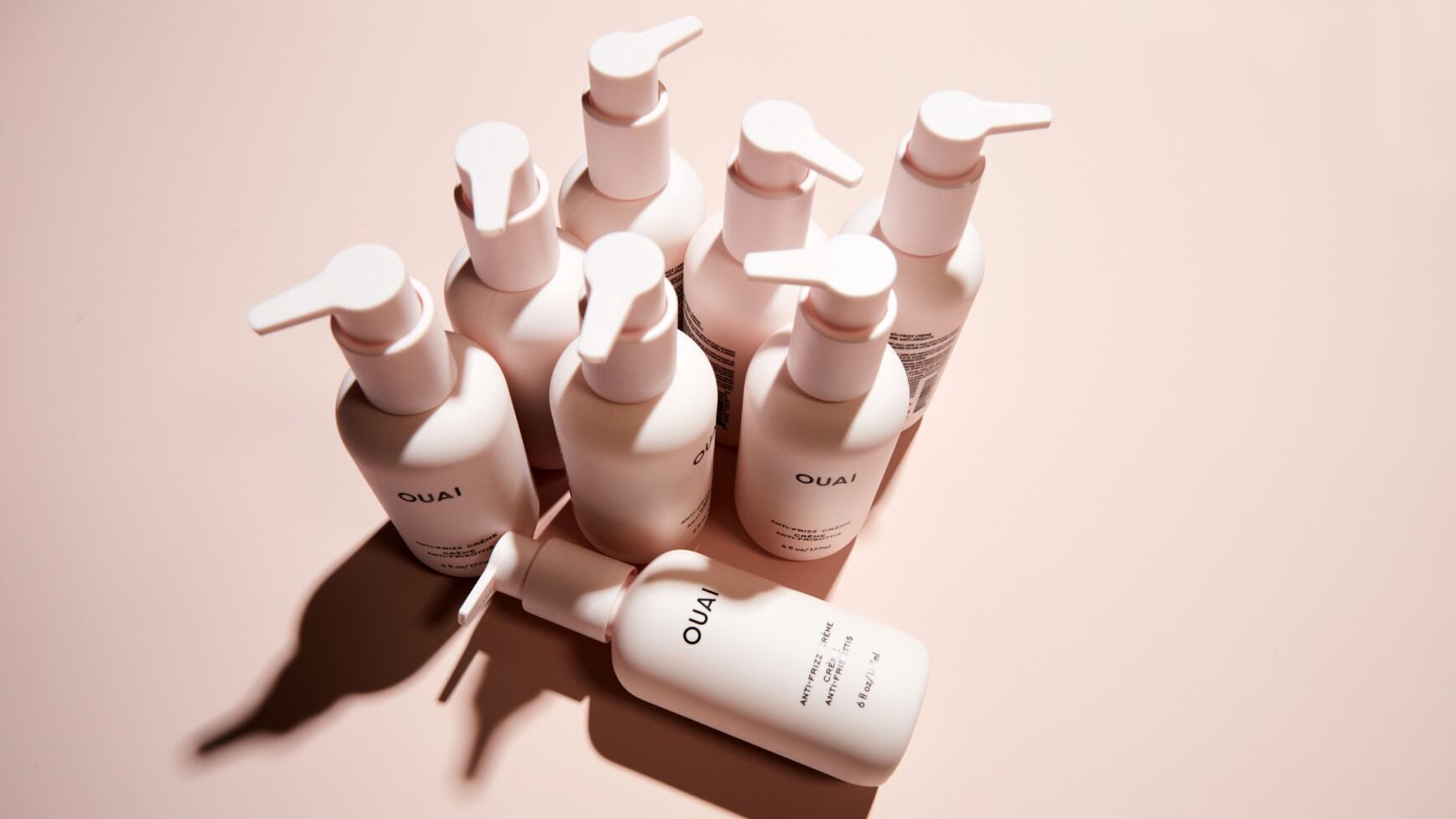A recently published study in the American Chemical Society’s Environmental Science & Technology journal has demonstrated that “a person can inhale a cumulative mass of 1-17 milligrams of potentially harmful chemicals in a single hair care session in their home,” explained Dr. Nusrat Jung, one of the study’s authors. The paper, “Siloxane Emissions and Exposures during the Use of Hair Care Products in Buildings,” sought to examine the exposure levels of common hair care product chemicals in ‘realistic hair care routine emission experiments.’
In this Q&A with CosmeticsDesign, Dr. Jung explained more about the study, including the procedures following to collect and analyze the data results, key takeaways regarding the findings and determinations, and how manufacturers and suppliers to the cosmetics and personal care product industries can utilize the research into product formulation and development processes.
CDU: Can you share some brief background information about yourself and your expertise?
Dr. Jung: I am an assistant professor at the Lyles School of Civil Engineering at Purdue university in West Lafayette, Indiana. In 2018, I received my doctoral degree from the Department of Mechanical Engineering at Aalto University in Espoo, Finland, where I was supported by the prestigious Academy of Finland Doctoral Fellowship and worked as a Research Scientist at the VTT Technical Research Centre of Finland.
I conduct research in the field of architectural engineering, with a focus on the environmental sensing of the built environment and indoor air quality. My research focuses on characterizing the operational emissions of climate- and health-relevant gases within and from residential and commercial buildings.
CDU: Why choose to conduct a study on this topic?
Dr. Jung: I am interested in air molecules inside closed spaces, mainly buildings because we cannot see these tiny molecules. I have waited a long time to evaluate the emissions generated when conducting hair care activities systematically.
As long as I can remember, for the last 7 years out of 10 years, I have straightened my curly hair and applied all kinds of commercial products together with heated appliances to conduct my typical hair care routine. I always observed the fumes right next to my head originating from my hair while conducting my everyday hair care activity.
But I didn’t have the controlled infrastructure (test-house) and a sophisticated instrument (chemical mass spectrometer) to measure the chemical composition of the air we breathe. I was very curious and wanted to understand this process fundamentally and evaluate it with appropriate instrumentation.
CDU: How was the study conducted?
Dr. Jung: This experimental research was conducted in a residential architectural engineering laboratory that I designed: the Purdue zero Energy Design Guidance for Engineers (zEDGE) Test House.
zEDGE is a mechanically ventilated, single-zone residential building with a conditioned interior. A state-of-the-art proton-transfer-reaction time-of-flight mass spectrometer (PTR-TOF-MS) from my laboratory was used to measure D5 siloxanes and other volatile chemicals in the indoor air in real time, second-by-second.
The hair care routine emission experiments were conducted during a measurement campaign in zEDGE over a period of several months, including three experiment types: realistic hair care experiments that replicate actual hair care routines in the home environment, hot plate emission experiments that explore the relationship between the temperature of the hair care tools and volatile organic compound emissions, and surface area emission experiments that investigate how hair surface area impacts volatile organic compound emissions during hair care events.
For the realistic hair care routine emission experiments, participants were asked to bring their own hair care products and hair styling tools to replicate their routines in zEDGE. Prior to each experiment, the participants were instructed to separate their hair into four sections. The hair length of each participant was categorized as long hair (below the shoulder) or short hair (above the shoulder). The sequence of each experiment consisted of four periods, to replicate a real-life routine.
After hair styling, the participants had two minutes to collect the tools and leave zEDGE; this was followed by a 60-minute concentration decay period, in which zEDGE was unoccupied, and the high-resolution PTR-TOF-MS monitored the decay in indoor volatile organic compound concentrations. The experiments and subsequent analysis focused on indoor volatile organic compound concentrations and emissions during and after active hair care routine periods.
CDU: What are the key takeaways from the study?
Dr. Jung: We discovered that several chemicals, particularly cyclic volatile methyl siloxanes — which are ubiquitous in hair care products — linger in the air after use. Our results show that a person can inhale a cumulative mass of 1-17 milligrams of potentially harmful chemicals in a single hair care session in their home.
We also found that applying high heat to these chemicals, such as though curling irons and hair straighteners, serves to further release the chemicals into the air. When met with temperatures of 210 degrees Celsius, we found the chemical emissions from the hair care products increased anywhere from 50% to 310%.
To make matters worse, these airborne chemicals do not merely remain in a single room — or even just the home. Home ventilation is likely a major pathway of indoor-to-outdoor siloxane transport. In urban environments, this is especially significant as you would have hundreds — even thousands — of homes ventilating out potentially harmful chemicals into the urban atmosphere all in a short span of time as people get ready for work and school in the morning.
These chemicals are then collectively piped back into buildings through ventilation systems once more. So even if using products with harmful chemicals is not part of your hair care routine, you will still be impacted due to your surroundings in an urban environment.
Our study reports that the cumulative indoor-to-outdoor D5 emission with the bathroom exhaust fan always off reaches 710 milligrams within three hours, while the indoor-to-outdoor D5 emission with the exhaust fan always on reaches 900 milligrams within only one hour.
CDU: Were any of the results surprising or unexpected? If so, what was surprising and why?
Dr. Jung: We found the results to be extremely alarming. We did not expect to see such significant emissions of volatile chemical mixtures from off-the-shelf hair care products during typical hair care routines that many people perform each and every day.
The often greatest — and most concerning — chemical inhaled, was found to be decamethylcyclopentasiloxane (aka D5 siloxane). It is an organosilicon compound and is often listed first or second in the ingredient lists of many hair care products, indicating it can be among the most abundant ingredients.
It has become a common ingredient over the past few decades in many personal care products due to its low surface tension, inertness, high thermal stability and smooth texture. D5 siloxane has been found to lead to adverse effects on the respiratory tract, liver and nervous system of laboratory animals.
The use of the chemical in wash-off cosmetic products has already been restricted in the European Union because of this reason. Many of these products are scented, too, and some of the chemicals used to make these fragrances are potentially dangerous to inhale, as well. According to the European Chemicals Agency, D5 siloxane is classified as “very persistent, very bio accumulative.” And while the test results on laboratory animals are already concerning, there is little information on its human impact.
CDU: Were there any challenges to conducting the study? If so, what were those challenges and how were those challenges overcome?
Dr. Jung: Yes. Operating an entire building (test house) and multiple sophisticated instruments simultaneously is complicated. On top of that, real people were conducting their hair care routines in our laboratory.
Developing our experimental protocol and ensuring all study elements were in sync and operating correctly was very challenging. We conducted over 46 emission experiments and then analyzed the data for several months, which went through a scientific peer review process in a top journal.
This was a very intensive effort for our entire team, and we overcame this challenge with dedication and hard work.
CDU: Having completed the study, what further research needs to be undertaken on this subject? Does Purdue University have any plans to undertake further research in this area, and if so, what are those plans?
Dr. Jung: There has not been much in-depth research into this topic, so we really have no idea to what extent the threat these chemicals pose when inhaled over a long period of time. There have been tests into ‘wash-off’ products like shampoos, but almost none for ‘leave-on’ products like hair gels, oils, creams, waxes, and sprays.
We hope to work with epidemiologists and toxicologists to further understand the health impacts of these exposures.
CDU: How can manufacturers and suppliers to the cosmetics and personal care product industries leverage the study’s findings when formulating ingredients for product formulations?
Dr. Jung: It is my recommendation to state on the product label that the consumers apply hair care products with their personal ventilation system turned on, such as a bathroom exhaust fan. Ventilation can be an effective way to reduce siloxane exposure during indoor hair care routines.
Our model shows that turning on the bathroom exhaust fan can reduce D5 inhalation exposures by over 90%. In the long term, it would be very helpful if the manufacturing companies investigated the potential exposure to the consumer when formulating such hair care products, mainly when used with heated appliances.





